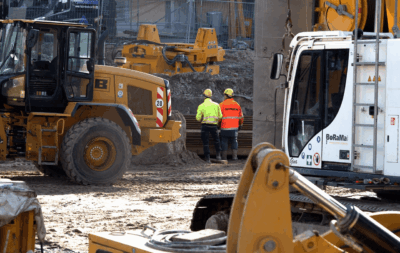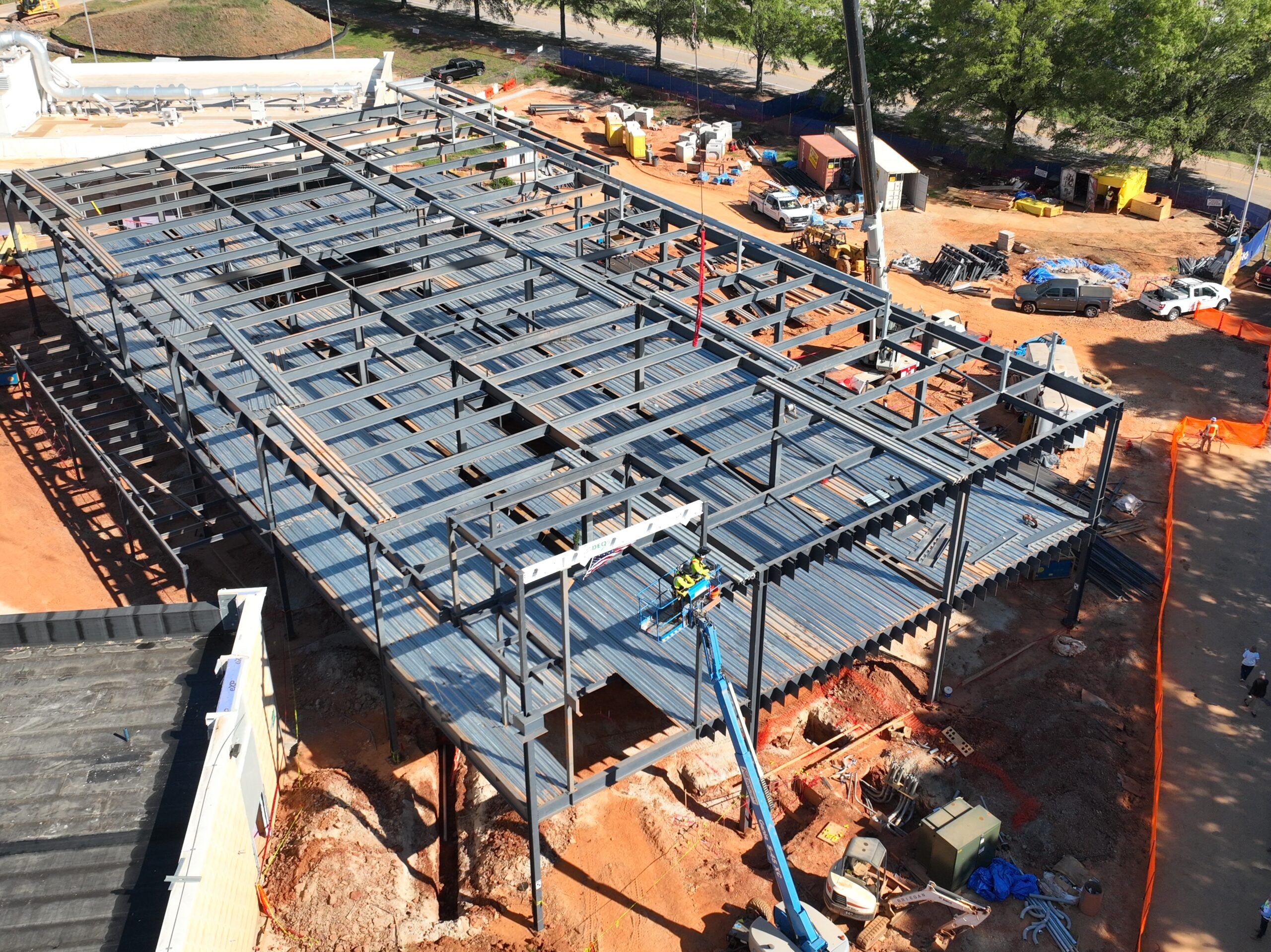Construction in Miami is booming. From luxury high-rises along Brickell to new residential neighborhoods and commercial hubs, the city’s skyline and suburbs are constantly changing. Miami’s growth, however, comes with its fair share of challenges for contractors, developers, and homeowners alike. The region’s unique climate, regulatory environment, and market dynamics make construction here different from almost anywhere else in the United States.
If you’re planning a project—whether it’s a custom home, commercial space, or large development—working with an experienced contractor in Miami is crucial, as it’s essential to understand the biggest challenges in Miami construction and how to overcome them.
1. Hurricane and Weather-Related Risks
One of the most significant obstacles to building in Miami is the weather. Miami sits in a hurricane-prone zone, and high winds, heavy rainfall, and flooding are always looming risks. Even when storms aren’t in season, Miami’s humid climate can create challenges for certain construction materials.
How to Overcome It:
- Hurricane-Resistant Design: Builders should integrate hurricane-resistant features such as impact windows, reinforced roofs, and stronger foundations. Florida’s building codes require strict standards for wind resistance, so compliance is non-negotiable.
- Weather-Resilient Materials: Use moisture-resistant materials like concrete, steel, and pressure-treated wood. These materials last longer in humid and storm-prone environments.
- Smart Scheduling: Contractors should plan construction timelines around hurricane season (June to November), allowing buffer time for possible weather delays.
2. Strict Building Codes and Permitting
Miami-Dade County enforces some of the toughest building codes in the country. While these regulations are designed to keep structures safe, they often make the construction process more complex and time-consuming. Obtaining permits can also take longer than expected, slowing down projects.
How to Overcome It:
- Work With Experienced Contractors: A contractor in Miami who has handled projects locally will understand the ins and outs of city and county codes.
- Stay Organized With Permits: Submitting complete documentation early helps avoid permit rejections or delays.
- Consult Specialists: Engaging code consultants or architects familiar with Miami-Dade’s rules can save both time and money.
3. High Construction Costs
Miami is one of the most expensive cities in Florida to build in. Rising material prices, labor shortages, and the demand for luxury-level finishes all contribute to the high costs. Add in the expense of meeting strict building codes, and budgets can quickly spiral.
How to Overcome It:
- Accurate Budget Planning: Factor in not just materials and labor, but also hidden costs like permits, inspections, and contingency funds.
- Value Engineering: Contractors and architects can suggest alternatives that maintain quality while reducing cost—such as choosing cost-effective finishes that still provide durability and style.
- Bulk Purchasing: For larger projects, sourcing materials in bulk or working with suppliers who offer long-term contracts can help stabilize costs.
4. Labor Shortages
Miami’s construction boom means demand for skilled workers is higher than supply. Contractors often face delays simply because they cannot get enough laborers, electricians, plumbers, or specialists on-site.
How to Overcome It:
- Partner With Reputable Contractors: Established firms usually have a stronger network of subcontractors and laborers.
- Plan for Flexibility: Build extra time into schedules in case labor shortages cause delays.
- Invest in Training: Some companies are starting to invest in training programs to upskill local workers rather than relying solely on outside labor.
5. Flooding and Rising Sea Levels
Miami is at the forefront of climate change challenges. Flooding, storm surges, and rising sea levels threaten the long-term viability of certain neighborhoods. This has a direct impact on construction, as homes and commercial buildings must be designed to withstand potential water damage.
How to Overcome It:
- Elevated Construction: Many projects in Miami now involve elevating foundations to reduce flood risk.
- Advanced Drainage Systems: Proper grading, drainage, and waterproofing techniques can protect against stormwater damage.
- Flood-Resistant Materials: Choosing materials like concrete and masonry over traditional wood framing can add years of durability.
6. Traffic and Site Access
Building in a dense city like Miami presents logistical challenges. Narrow streets, heavy traffic, and limited space for staging equipment make it difficult to move materials and machinery to construction sites—especially downtown.
How to Overcome It:
- Detailed Logistics Planning: Contractors should carefully schedule deliveries to avoid peak traffic hours.
- Use of Local Suppliers: Sourcing materials closer to the site reduces delivery times and complications.
- Coordination With City Authorities: Securing proper permits for road closures or sidewalk usage helps minimize disruptions.
7. Environmental and Zoning Restrictions
Miami is home to sensitive ecosystems, including wetlands and coastal zones. Construction projects often face strict environmental reviews to ensure minimal impact. Zoning laws can also complicate plans, particularly for high-density projects or developments near protected areas.
How to Overcome It:
- Hire Environmental Consultants: Their expertise ensures compliance with regulations and helps secure necessary approvals.
- Engage Early With City Planners: Addressing zoning issues in the design phase avoids costly redesigns later.
- Sustainable Construction Practices: Incorporating eco-friendly methods not only helps meet regulatory requirements but also appeals to environmentally conscious buyers.
8. Project Delays and Supply Chain Disruptions
Global supply chain issues, especially since 2020, have impacted Miami’s construction industry. From delayed shipments of steel to shortages of finishing materials, contractors often face unexpected delays.
How to Overcome It:
- Order Materials Early: Contractors should secure key supplies well before they are needed.
- Use Alternative Materials: Flexibility in design allows for substitutions if certain products are delayed.
- Transparent Communication: Keeping clients informed about possible delays builds trust and helps manage expectations.
9. Competition Among Contractors
With Miami’s construction demand at an all-time high, many contractors compete for the same projects. While this can benefit property owners by providing multiple options, it also creates challenges for contractors who need to stand out in a crowded market.
How to Overcome It:
- Focus on Reputation: Contractors who consistently deliver high-quality work on time will naturally rise above the competition.
- Offer Specialized Expertise: Contractors with niche expertise—such as green building, luxury finishes, or hurricane-proofing—can carve out a competitive edge.
- Prioritize Client Relationships: Excellent customer service, clear communication, and transparency help build lasting relationships and referrals.
Final Thoughts
Miami is one of the most dynamic construction markets in the United States. The city’s location, booming real estate industry, and constant demand for residential and commercial development make it a hub of opportunity. However, those opportunities come with significant challenges—ranging from hurricanes and flooding to labor shortages and strict building codes.
The good news? With the right planning, expertise, and proactive strategies, these challenges can be overcome. Whether you’re a homeowner working with a contractor in Miami or a developer managing large-scale construction, understanding the unique hurdles of the region is the first step toward success.
By choosing experienced contractors, planning carefully, and embracing resilient building practices, Miami’s construction projects can not only withstand today’s challenges but also thrive well into the future.












